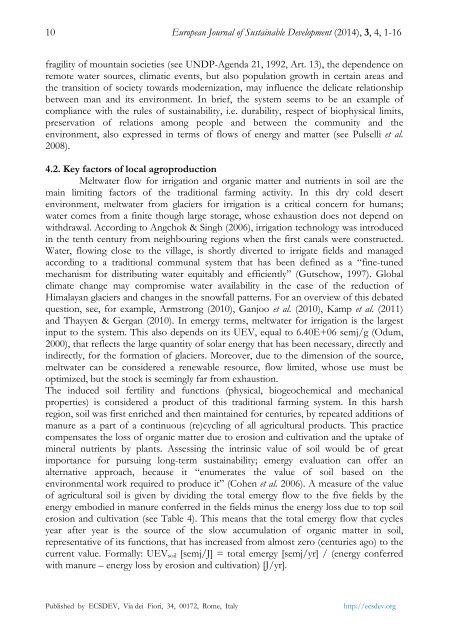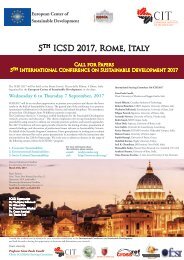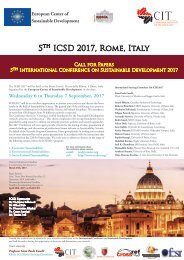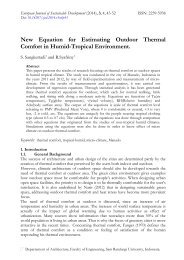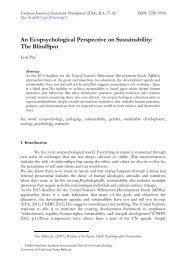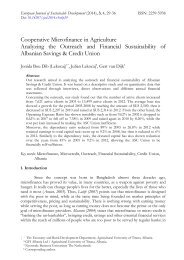Emergy evaluation of a traditional farming system. Case study: Leh District (Ladakh - Indian Trans-Himalaya)
Ladakh traditional farming system has been included on the F.A.O. list of possible “Globally Important Agricultural Heritage Systems”, worthy of being preserved and conserved. The paper describes and assesses cultivation practices in a typical familymanaged farm, located in central Ladakh, analysing how natural resources are exploited, conserved and recycled. Emergy evaluation, an environmental accounting methodology, has been applied to evaluate and compare five staple crop productions: barley, wheat, pea, mustard, and fodder alfalfa. Unit Emergy Values of products (UEV, emergy per unit product, a measure of the environmental production cost) are calculated, taking into account the inputs to production such as water from glaciers, soil fertility, human and animal labour, and more. Results show that the traditional agricultural practices in Ladakh, completely supported by renewable flows, are efficient in the use of local resources. In fact, the UEVs of agroproducts are similar to those of analogous products of conventional agriculture (e.g. 5.27E+05 and 6.64E+05 semj/J for barley and wheat in Ladakh, respectively; 7.37E+05 semj/J for corn in USA), though the inputs of Ladakh agriculture are strongly limited in type and quantity. At the same time, local farmers can create, maintain and rebuild soil functions whose UEV is 1.62E+07 semj/J. Keywords: Ladakh, agrosystem, emergy, environment, sustainability
Ladakh traditional farming system has been included on the F.A.O. list of possible “Globally Important Agricultural Heritage Systems”, worthy of being preserved and
conserved. The paper describes and assesses cultivation practices in a typical familymanaged farm, located in central Ladakh, analysing how natural resources are exploited, conserved and recycled. Emergy evaluation, an environmental accounting methodology, has been applied to evaluate and compare five staple crop productions: barley, wheat, pea, mustard, and fodder alfalfa. Unit Emergy Values of products (UEV, emergy per unit product, a measure of the environmental production cost) are calculated, taking into account the inputs to production such as water from glaciers, soil fertility, human and
animal labour, and more. Results show that the traditional agricultural practices in Ladakh,
completely supported by renewable flows, are efficient in the use of local resources. In fact, the UEVs of agroproducts are similar to those of analogous products of conventional agriculture (e.g. 5.27E+05 and 6.64E+05 semj/J for barley and wheat in Ladakh, respectively; 7.37E+05 semj/J for corn in USA), though the inputs of Ladakh agriculture are strongly limited in type and quantity. At the same time, local farmers can create, maintain and rebuild soil functions whose UEV is 1.62E+07 semj/J.
Keywords: Ladakh, agrosystem, emergy, environment, sustainability
You also want an ePaper? Increase the reach of your titles
YUMPU automatically turns print PDFs into web optimized ePapers that Google loves.
10 European Journal <strong>of</strong> Sustainable Development (2014), 3, 4, 1-16<br />
fragility <strong>of</strong> mountain societies (see UNDP-Agenda 21, 1992, Art. 13), the dependence on<br />
remote water sources, climatic events, but also population growth in certain areas and<br />
the transition <strong>of</strong> society towards modernization, may influence the delicate relationship<br />
between man and its environment. In brief, the <strong>system</strong> seems to be an example <strong>of</strong><br />
compliance with the rules <strong>of</strong> sustainability, i.e. durability, respect <strong>of</strong> biophysical limits,<br />
preservation <strong>of</strong> relations among people and between the community and the<br />
environment, also expressed in terms <strong>of</strong> flows <strong>of</strong> energy and matter (see Pulselli et al.<br />
2008).<br />
4.2. Key factors <strong>of</strong> local agroproduction<br />
Meltwater flow for irrigation and organic matter and nutrients in soil are the<br />
main limiting factors <strong>of</strong> the <strong>traditional</strong> <strong>farming</strong> activity. In this dry cold desert<br />
environment, meltwater from glaciers for irrigation is a critical concern for humans;<br />
water comes from a finite though large storage, whose exhaustion does not depend on<br />
withdrawal. According to Angchok & Singh (2006), irrigation technology was introduced<br />
in the tenth century from neighbouring regions when the first canals were constructed.<br />
Water, flowing close to the village, is shortly diverted to irrigate fields and managed<br />
according to a <strong>traditional</strong> communal <strong>system</strong> that has been defined as a “fine-tuned<br />
mechanism for distributing water equitably and efficiently” (Gutschow, 1997). Global<br />
climate change may compromise water availability in the case <strong>of</strong> the reduction <strong>of</strong><br />
<strong>Himalaya</strong>n glaciers and changes in the snowfall patterns. For an overview <strong>of</strong> this debated<br />
question, see, for example, Armstrong (2010), Ganjoo et al. (2010), Kamp et al. (2011)<br />
and Thayyen & Gergan (2010). In emergy terms, meltwater for irrigation is the largest<br />
input to the <strong>system</strong>. This also depends on its UEV, equal to 6.40E+06 semj/g (Odum,<br />
2000), that reflects the large quantity <strong>of</strong> solar energy that has been necessary, directly and<br />
indirectly, for the formation <strong>of</strong> glaciers. Moreover, due to the dimension <strong>of</strong> the source,<br />
meltwater can be considered a renewable resource, flow limited, whose use must be<br />
optimized, but the stock is seemingly far from exhaustion.<br />
The induced soil fertility and functions (physical, biogeochemical and mechanical<br />
properties) is considered a product <strong>of</strong> this <strong>traditional</strong> <strong>farming</strong> <strong>system</strong>. In this harsh<br />
region, soil was first enriched and then maintained for centuries, by repeated additions <strong>of</strong><br />
manure as a part <strong>of</strong> a continuous (re)cycling <strong>of</strong> all agricultural products. This practice<br />
compensates the loss <strong>of</strong> organic matter due to erosion and cultivation and the uptake <strong>of</strong><br />
mineral nutrients by plants. Assessing the intrinsic value <strong>of</strong> soil would be <strong>of</strong> great<br />
importance for pursuing long-term sustainability; emergy <strong>evaluation</strong> can <strong>of</strong>fer an<br />
alternative approach, because it “enumerates the value <strong>of</strong> soil based on the<br />
environmental work required to produce it” (Cohen et al. 2006). A measure <strong>of</strong> the value<br />
<strong>of</strong> agricultural soil is given by dividing the total emergy flow to the five fields by the<br />
energy embodied in manure conferred in the fields minus the energy loss due to top soil<br />
erosion and cultivation (see Table 4). This means that the total emergy flow that cycles<br />
year after year is the source <strong>of</strong> the slow accumulation <strong>of</strong> organic matter in soil,<br />
representative <strong>of</strong> its functions, that has increased from almost zero (centuries ago) to the<br />
current value. Formally: UEV soil [semj/J] = total emergy [semj/yr] / (energy conferred<br />
with manure – energy loss by erosion and cultivation) [J/yr].<br />
Published by ECSDEV, Via dei Fiori, 34, 00172, Rome, Italy<br />
http://ecsdev.org


